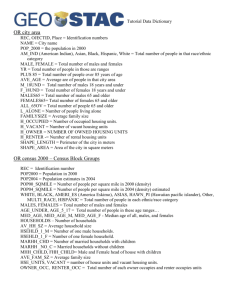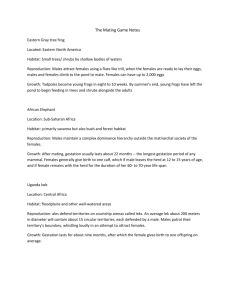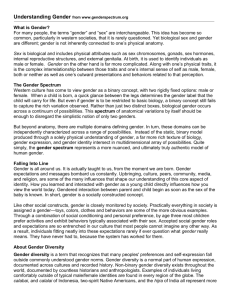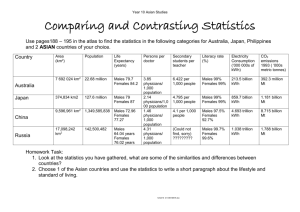Body Image in the Media PPT - OISE-Social-Science-2009-2010
advertisement
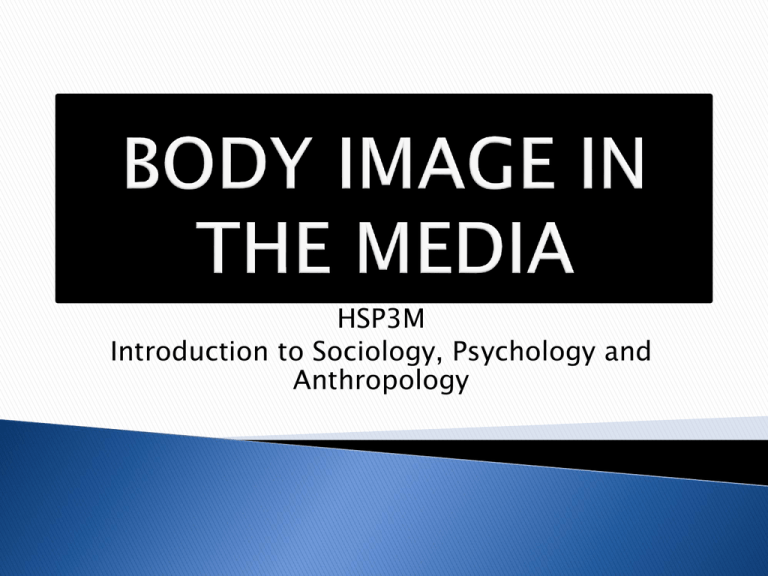
HSP3M Introduction to Sociology, Psychology and Anthropology Social Comparison Theory: People will [at some point in their lives] compare themselves and significant others to people and images whom they perceive to represent realistic goals to attain (Botta, 1999). We look to the media to define, shape and explain the world around us (Bereska, 2004). Many people internalize the ideals promoted in the mass media and judge themselves by these unattainable standards (Bereska, 2004). “ The ability to sift through and analyze the messages that inform, entertain and sell to us everyday. It is the ability to bring critical thinking skills to bear on all media... it's the instinct to question what lies behind media productions— the motives, the money, the values and the ownership— and to be aware of how these factors influence content.” (http://www.media-awareness.ca/english/teachers/media_literacy/what_is_media_literacy.cfm) www.people.com/people/tyra_banks Explain whether or not it is realistic to compare oneself to the images portrayed in the media? www.abercrombie.ca To what extent could one argue that media images portraying unrealistic body images influence young people? Males face a comparable amount of pressure to females when it comes to body image in the media. Focus less on weight and more on masculinity Males face pressures to be LARGER and more MUSCULAR without becoming fatter (Bereska, 2004). The average male model has shed 12 lbs of fat and gained 25 lbs of muscle in the past 25 yrs. http://www.snac.ucla.edu/pages/Body_Image/Body_Image.htm http://i.models.com/model_culture/50topmalemodel s/images/oliver.jpg http://i186.photobucket.com/albums/x169/100malemodels/calv inkleinman-garrettneff.jpg The presence of THIN male models has been on the rise. A wide range of body sizes are more acceptable for males compared to females. HOWEVER, there are social consequences for being overweight for both males and females. (Bereska, 2004). What can be identified as being some of the social consequences that both males and females suffer as a result of not living up to the ideal body image presented in the media? http://www.bwgreyscale.com/ads/guess.html Portrayals of females in all forms of media have become THINNER over the last several decades (Bereska, 2004) 25 yrs ago the average model weighed 8% less than the average North American Woman; Currently the average female model weighs 23% below her average weight. (http://www.snac.ucla.edu/pages/Body_Image/Body_Image.htm). The gap between women in the media and the average women in society as grown and will continue to grow (Bereska, 2004). http://55secretstreet.typepad.com/.shared/image.ht ml?/photos/uncategorized/2007/09/12/hfredriksson 5.jpg Average Female Model: 5 Feet 9 Inches 123 lbs Sixe 6-8 Dangerously low body fat Average North American Woman: 5 Feet 4 Inches 144 lbs Size 12 http://thesituationist.wordpress.com/2008/09/02/ the-situation-of-body-image/ 50 % OF FEMALES AND 35% OF MALES REPORT DISSATISFACTION WITH THEIR BODY IMAGE. (Bain, 2001) What are some of the dangers that one could predict as occurring as a result of the media portraying body image ideals that are becoming increasingly thin for females and extremely muscular for males? http://femininebeauty.info/images /skinny.models.jpg www.abercrombie.ca http://www.flickr.com/photos/27480143@N06/37101 38648/ http://www.menshealth.com/cda/homepage.do http://www.bwgreys cale.com/ads/ralph_l auren http://www.abercrombie.ca/webapp/wcs/stores/servlet/division_11306_10901_12202_-1 How might body image in the media affect males and females differently?








